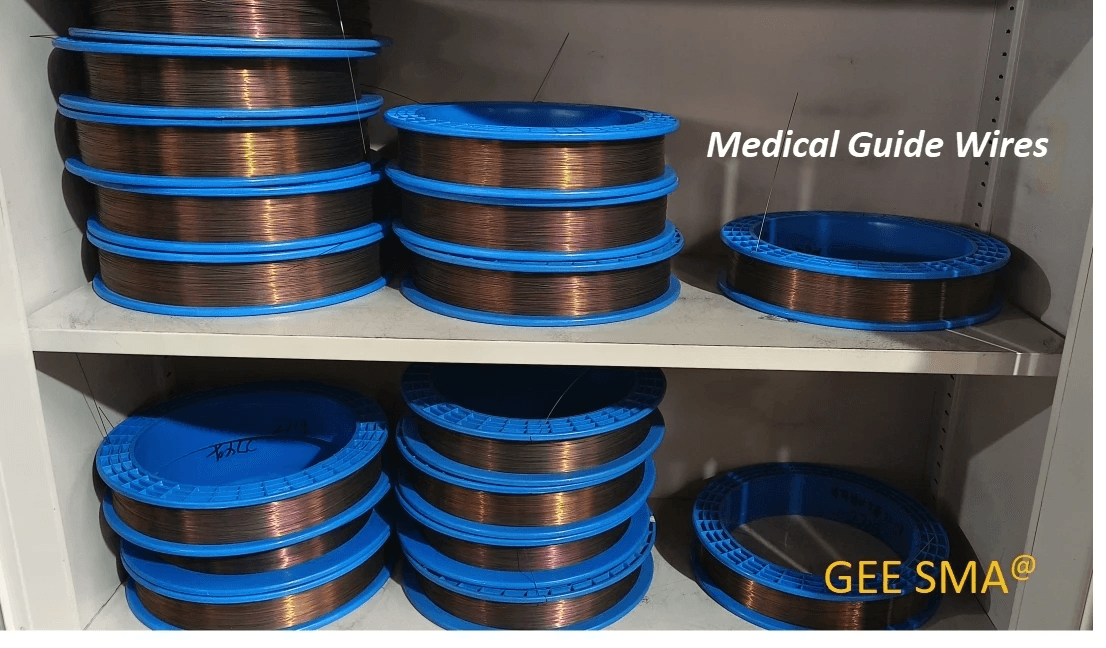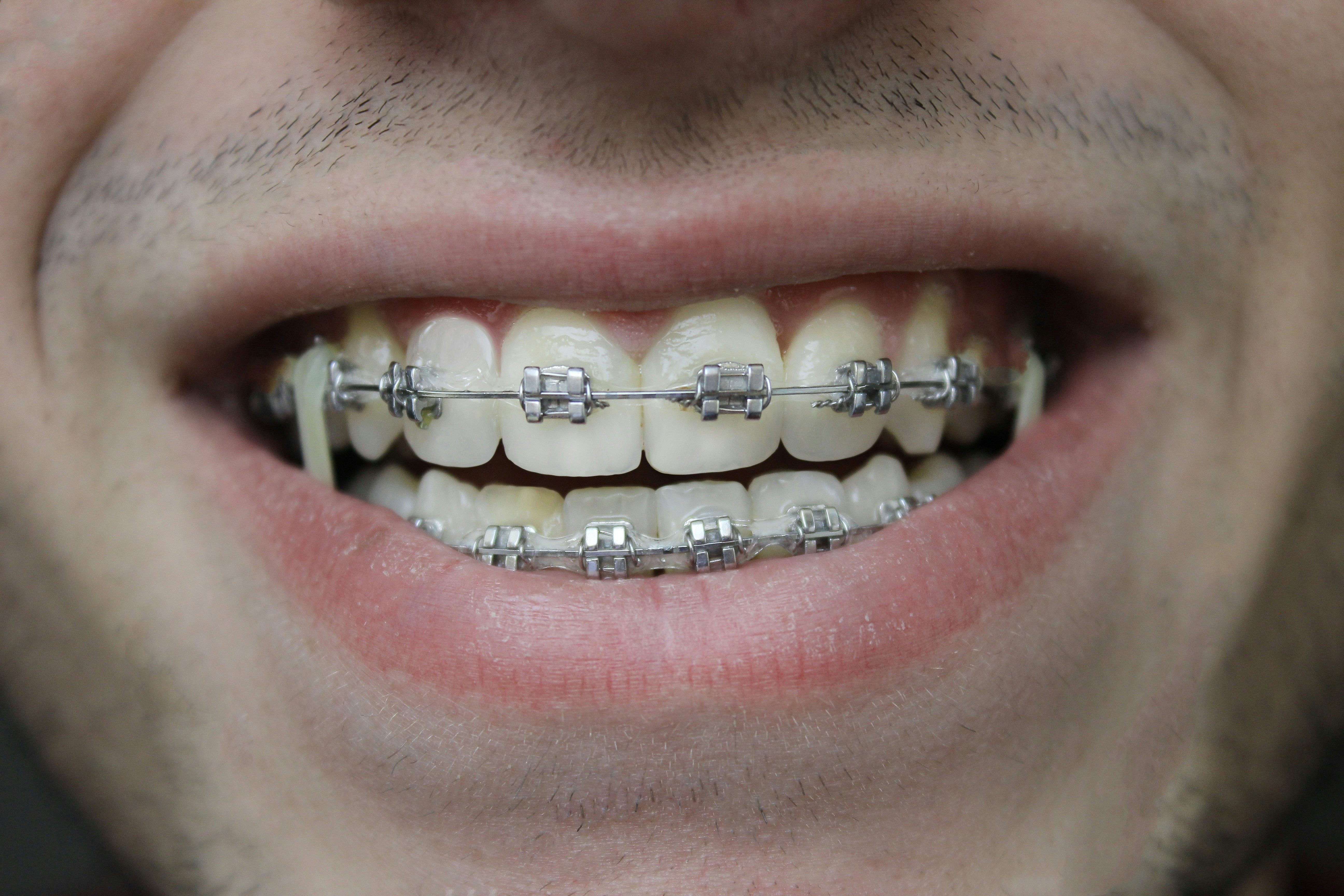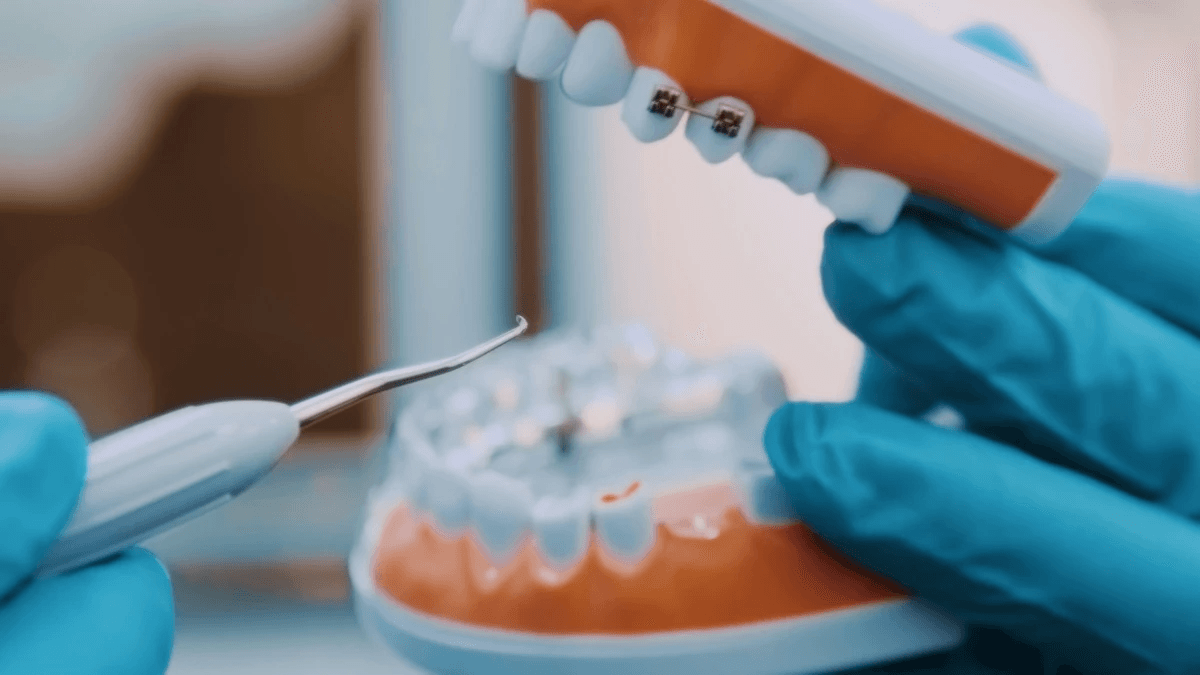Introduction

Orthodontics has come a long way in improving dental aesthetics and functionality, largely thanks to innovations like the Copper Niti archwire. This remarkable material, known for its heat-activated properties, plays a pivotal role in the effectiveness of braces in orthodontics. With the introduction of advanced products from companies like GEE SMA, the landscape of orthodontic supplies is evolving rapidly.
Understanding Copper Niti Heat Activated Arch Wire
Copper Niti archwire, often referred to as Cu Niti archwire, combines nickel and titanium with a touch of copper to create a unique alloy that responds to temperature changes. This innovative material allows for gentle and consistent force application on teeth throughout treatment. The heat activation feature means that the wire can adapt its shape and stiffness based on oral temperature, offering enhanced comfort and efficiency compared to traditional niti archwire.
Importance of Arch Wire in Orthodontics
The arch wire is a critical component in all types of braces, serving as the main mechanism that guides tooth movement during orthodontic treatment. Without an effective arch wire, achieving desired results can be challenging or even impossible. Copper Niti's flexibility and responsiveness make it an ideal choice for various types of braces, ensuring smoother adjustments and better patient experiences.
GEE SMA and Innovation in Orthodontic Supplies
GEE SMA stands out as a leader in orthodontic supplies by continuously pushing boundaries with their high-quality products like Copper Niti archwire. Their commitment to innovation ensures that dental professionals have access to state-of-the-art materials that enhance treatment outcomes. As they refine their niti arch wire offerings, GEE SMA significantly impacts modern orthodontics by contributing to better patient care and more effective treatments.
What is Copper Niti Archwire

Copper Niti archwire, often referred to as Cu Niti archwire, is a specialized type of orthodontic wire made from a combination of nickel and titanium with the addition of copper. This unique alloy allows for enhanced flexibility and resilience, making it an ideal choice for various types of braces in orthodontics. With its remarkable properties, Copper Niti archwire plays a pivotal role in achieving effective tooth movement while minimizing discomfort for patients.
Definition of Copper Niti Archwire
Copper Niti archwire is defined as a dental wire composed primarily of nickel-titanium alloy infused with copper elements. This innovative material exhibits superelasticity and shape memory characteristics, which are crucial for effective orthodontic treatment. In simpler terms, this means that the wire can return to its original shape after being deformed, allowing it to exert consistent forces on teeth over time.
Key Characteristics of Niti Arch Wire
The key characteristics of Niti arch wire include its exceptional flexibility and ability to adapt to different tooth movements without losing its form. Unlike traditional stainless steel wires, Copper Niti archwire offers lower friction between the wire and brackets, which contributes to more efficient tooth movement during treatment. Additionally, this type of arch wire has a lower activation temperature compared to standard NiTi wires; hence it responds effectively to body heat—making it particularly advantageous in orthodontics.
Benefits in Orthodontic Treatment
The benefits of using Copper Niti archwire in orthodontic treatment are numerous and impactful. First and foremost, the superior elasticity allows for gentle yet continuous force application on teeth, promoting smoother adjustments throughout the treatment process. Furthermore, patients experience less discomfort due to reduced frictional resistance when utilizing braces fitted with Cu Niti archwires; this ultimately leads to shorter appointment times and improved overall satisfaction with their orthodontic journey.
Types of Braces and Their Applications

When it comes to achieving that perfect smile, the type of braces you choose plays a pivotal role. In orthodontics, various types of braces are available, each designed to address specific dental issues while utilizing different materials and techniques. Understanding these options can help patients make informed decisions about their treatment, particularly regarding the use of Copper Niti archwire.
Overview of Different Types of Braces
Braces in orthodontics come in several forms, including traditional metal braces, ceramic braces, lingual braces, and clear aligners. Traditional metal braces are the most common and consist of brackets and wires that work together to shift teeth into proper alignment. Ceramic braces offer a more aesthetic option with tooth-colored brackets that blend in with the teeth, while lingual braces are placed behind the teeth for a discreet look; both still rely on effective arch wires like Niti arch wire for their functionality.
Clear aligners have gained popularity for their comfort and invisibility but may not be suitable for all cases; they also utilize specific types of arch wires when necessary. Each type has its own set of advantages and applications depending on individual needs and preferences in orthodontic treatment. Therefore, understanding these different types is crucial when considering how Copper Niti archwire can enhance your overall experience.
Role of Arch Wire in Braces
The arch wire is a fundamental component within any brace system; it connects all brackets together and provides the necessary force to move teeth into alignment over time. In essence, it acts as a guide for tooth movement by applying gentle pressure on the brackets attached to each tooth. The effectiveness of this process heavily relies on the material properties of the arch wire used—this is where Copper Niti archwire shines.
Copper Niti archwire has unique characteristics that allow it to exert consistent forces throughout treatment while also being flexible enough to accommodate various tooth movements without breaking or deforming easily. This flexibility ensures that patients experience less discomfort during adjustments compared to other materials like stainless steel or conventional Niti arch wire configurations. Ultimately, selecting an appropriate arch wire is critical for achieving optimal results in orthodontic care.
How Copper Niti Archwire Fits In
Copper Niti archwire offers distinct advantages over traditional options due to its superior properties derived from its unique copper alloy composition combined with nickel titanium (Niti). This innovative material allows for heat activation—meaning it can respond dynamically to temperature changes within the mouth—resulting in efficient tooth movement with minimal discomfort during treatment sessions. As part of modern orthodontics, Cu Niti archwire fits seamlessly into various brace systems by enhancing performance across all types.
Moreover, its application extends beyond just aesthetics; Copper Niti is known for reducing friction against brackets which leads to smoother adjustments and shorter appointment times at your orthodontist's office! By incorporating this advanced material into their practices, orthodontists can provide better outcomes while ensuring patient comfort throughout their journey toward straighter teeth. With such benefits at hand, it's no wonder that Copper Niti has become a go-to choice among practitioners looking to optimize treatments.
The Science Behind Heat Activated Arch Wire

Heat activated arch wires, particularly Copper Niti archwire, have revolutionized the field of orthodontics. Understanding the science behind these innovative wires helps orthodontists select the best materials for effective treatment. With their unique properties, Copper Niti archwires are becoming increasingly popular in various types of braces.
Mechanism of Action of Niti Arch Wire
Niti arch wire operates on the principle of shape memory and superelasticity, allowing it to return to its original shape when heated above a certain temperature. This mechanism is crucial in orthodontics, as it enables the wire to exert a consistent force on the teeth over time. When used in braces, this quality ensures that tooth movement occurs gradually and predictably, enhancing patient comfort during treatment.
The specific composition of Copper Niti archwire includes copper along with nickel titanium (Niti), which enhances its mechanical properties compared to traditional Niti arch wire. This combination allows for greater flexibility and adaptability within various types of braces while maintaining effective force delivery. As a result, patients experience less discomfort and quicker adjustments during their orthodontic journey.
Advantages of Heat Activation
One significant advantage of heat activation in Copper Niti archwire is its ability to adjust force levels based on oral temperature changes. When exposed to body heat, these wires become more pliable and can adapt easily to tooth movements without requiring excessive pressure or frequent adjustments by the orthodontist. This feature reduces chair time for both patients and practitioners while improving overall treatment efficiency.
Additionally, heat-activated Cu Niti archwires provide a smoother transition between different stages of treatment due to their unique thermal properties. They can gently guide teeth into alignment without causing unnecessary pain or discomfort often associated with traditional wires that exert constant force regardless of temperature changes. Consequently, patients enjoy a more pleasant experience throughout their time wearing braces in orthodontics.
Application in Orthodontics
Incorporating Copper Niti archwire into modern orthodontic practices has led to improved outcomes across various cases—from simple misalignments to complex dental issues requiring multiple types of braces for correction. Its versatility makes it suitable for both children and adults undergoing treatment with varying degrees of malocclusion or spacing concerns. The ability to tailor treatments using this advanced material has made it an essential tool in an orthodontist's arsenal.
Moreover, utilizing heat-activated Cu Niti wires allows practitioners to achieve better control over tooth movement patterns while minimizing side effects like root resorption or unwanted tipping during alignment processes. As such, these innovative wires not only enhance patient comfort but also contribute significantly toward achieving optimal aesthetic results faster than traditional methods would allow—making them indispensable in contemporary niti archwire orthodontics.
GEE SMA’s Contribution to Orthodontics

GEE SMA has emerged as a leading player in the field of orthodontics, particularly known for its innovative products that enhance the effectiveness of treatments. Their commitment to quality and cutting-edge technology has made them a trusted name among orthodontic professionals. With a focus on developing advanced materials like Copper Niti Archwire, GEE SMA is revolutionizing how braces in orthodontics are perceived and utilized.
Overview of GEE SMA Products
GEE SMA offers a comprehensive range of orthodontic supplies, with a special emphasis on Niti archwire and its various applications. Their product portfolio includes an array of arch wires designed for different types of braces, catering to the diverse needs of patients. By incorporating unique features into their Copper Niti Archwire products, GEE SMA ensures that orthodontists have access to effective solutions that promote better alignment and comfort during treatment.
Quality and Innovation in Nitinol Alloys
The quality of GEE SMA's products is largely attributed to their use of high-grade nitinol alloys, which are essential for producing reliable and effective niti arch wire. This innovative material allows for greater flexibility and resilience compared to traditional wires, making it ideal for various types of braces. The enhanced properties of Cu niti archwire contribute significantly to improved patient outcomes by providing consistent force application throughout the treatment process.
Impact on Modern Orthodontic Practices
The introduction of GEE SMA's advanced Copper Niti Archwire has had a transformative impact on modern orthodontic practices. With its superior performance characteristics, this niti arch wire not only simplifies the treatment process but also enhances patient comfort during wear. As more practitioners recognize the benefits offered by GEE SMA's products, we can expect an ongoing evolution in techniques used within niti archwire orthodontics that prioritize both effectiveness and patient satisfaction.
Choosing the Right Arch Wire for Your Treatment
When it comes to orthodontic treatment, selecting the right arch wire can significantly influence the success and comfort of your braces. With a variety of options available, including copper niti archwire and other materials like stainless steel or polymer, understanding the nuances of each can help you make an informed choice. The type of braces you choose also plays a crucial role in determining which arch wire will best suit your treatment needs.
Factors to Consider in Arch Wire Selection
Several factors should be considered when selecting an arch wire for orthodontics. First, the specific dental issues being addressed—such as crowding or spacing—will guide your choice between different types of braces and their corresponding arch wires. Second, patient comfort is paramount; some materials may cause more irritation than others, affecting compliance with treatment.
Another important consideration is how quickly you want to achieve results. Copper niti archwire offers unique heat-activated properties that can enhance tooth movement efficiency compared to traditional niti arch wire options. Lastly, consulting with an orthodontic professional can provide tailored advice based on individual dental anatomy and treatment goals.
Copper Niti vs Other Materials
Copper niti archwire stands out among other materials used in braces due to its exceptional flexibility and heat-activated properties. Unlike standard niti arch wire, which functions effectively at room temperature, copper niti maintains its shape memory even when subjected to varying oral temperatures, providing consistent force over time. This characteristic makes it particularly beneficial for complex orthodontic cases where precision is key.
In comparison with stainless steel or polymer-based options, copper niti often provides a smoother experience for patients due to reduced friction against brackets. This means less discomfort during adjustments—a win-win for both patients and orthodontists! Ultimately, while each material has its place in orthodontics, the benefits of cu niti archwire are hard to overlook when aiming for optimal results.
Professional Recommendations for Best Outcomes
To achieve the best outcomes from your orthodontic treatment using copper niti or other types of braces in orthodontics, it's essential to follow professional recommendations closely. Orthodontists typically recommend starting with a specific type of nitinol alloy that suits your individual needs before transitioning into more advanced options like copper niti as your teeth begin shifting into place.
Regular check-ups are crucial; they allow professionals to monitor progress and make timely adjustments that could enhance effectiveness further—especially when using innovative materials like cu niti archwire! Remember that every patient's journey is unique; thus what works wonders for one may not be ideal for another.
Conclusion
In the world of orthodontics, Copper Niti archwire stands out as a game changer, offering unique benefits that enhance treatment outcomes. This innovative material, also known as Cu Niti archwire, plays a crucial role in aligning teeth effectively while minimizing discomfort for patients. As we wrap up our discussion on this remarkable product, it’s clear that Copper Niti archwire is indispensable in modern braces in orthodontics.
Summary of Copper Niti Archwire Benefits
The advantages of Copper Niti archwire are numerous and significant for both orthodontists and patients alike. First, the unique properties of NiTi (nickel-titanium) allow for gentle yet effective tooth movement, making it a preferred choice among various types of braces. Additionally, its heat-activated mechanism ensures that the wire responds to body temperature, providing optimal force levels throughout treatment—making it a standout option in niti arch wire selection.
Another noteworthy benefit is the improved patient comfort associated with Cu Niti archwire compared to traditional stainless steel options. The flexibility and resilience of this material reduce the likelihood of breakage or excessive pressure on teeth and gums during adjustments. Overall, incorporating Copper Niti into orthodontic practices enhances treatment efficiency while prioritizing patient satisfaction.
GEE SMA's Role in Advancing Orthodontics
GEE SMA has made significant contributions to orthodontics by focusing on innovation and quality in their products—particularly their range of niti archwires. Their commitment to using advanced materials ensures that practitioners have access to reliable solutions like Copper Niti archwire which can optimize treatment plans across various types of braces. By continuously investing in research and development, GEE SMA helps set new standards within niti arch wire orthodontics.
Moreover, GEE SMA's dedication to excellence extends beyond product manufacturing; they actively engage with dental professionals to understand their needs better. This collaborative approach allows them to refine existing products while introducing cutting-edge innovations tailored specifically for modern orthodontic practices. As such, GEE SMA plays an essential role not only in supplying high-quality materials but also in shaping the future landscape of braces in orthodontics.
Future Trends in Orthodontic Materials and Techniques
Looking ahead, we can anticipate exciting developments within the field of orthodontic materials and techniques that will further elevate patient care standards. Innovations such as 3D printing technology could revolutionize how braces are designed and customized; expect more personalized solutions utilizing materials like Cu Niti for enhanced effectiveness! Additionally, advancements in smart technology may lead to self-adjusting systems that minimize office visits while maximizing comfort—truly a win-win situation.
Furthermore, ongoing research into biocompatible materials may pave the way for even safer options than current offerings like Copper Niti archwire or other traditional alternatives used today. As these trends unfold within niti arch wire orthodontics over time, practitioners will undoubtedly be equipped with ever-improving tools enabling them to achieve remarkable results for their patients’ smiles!

